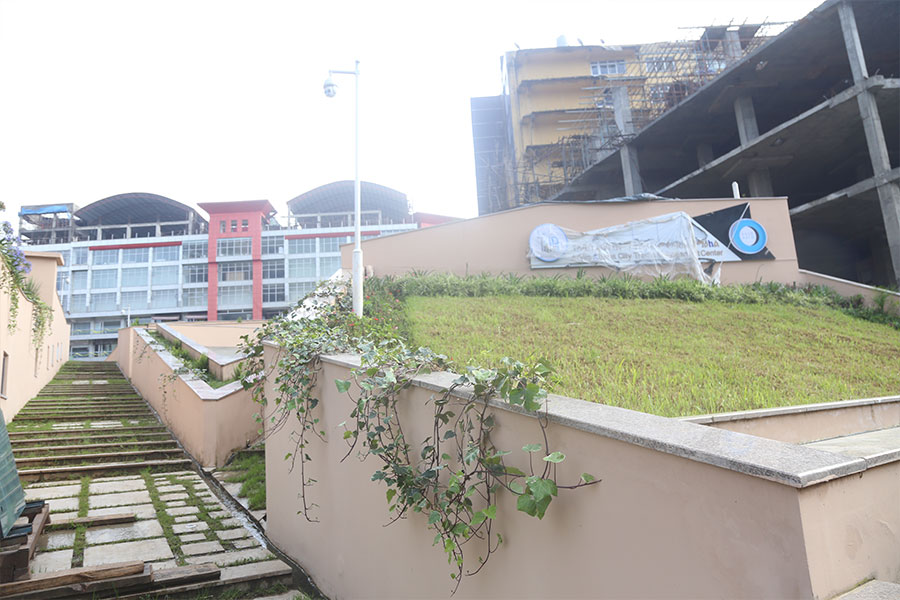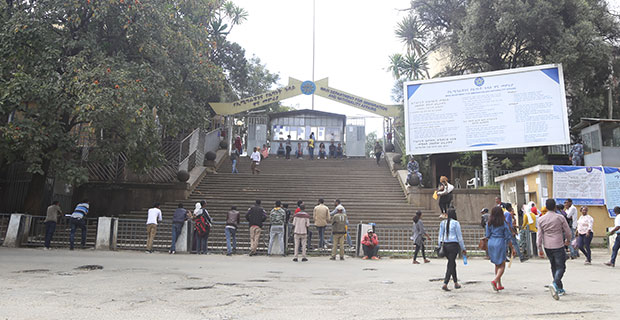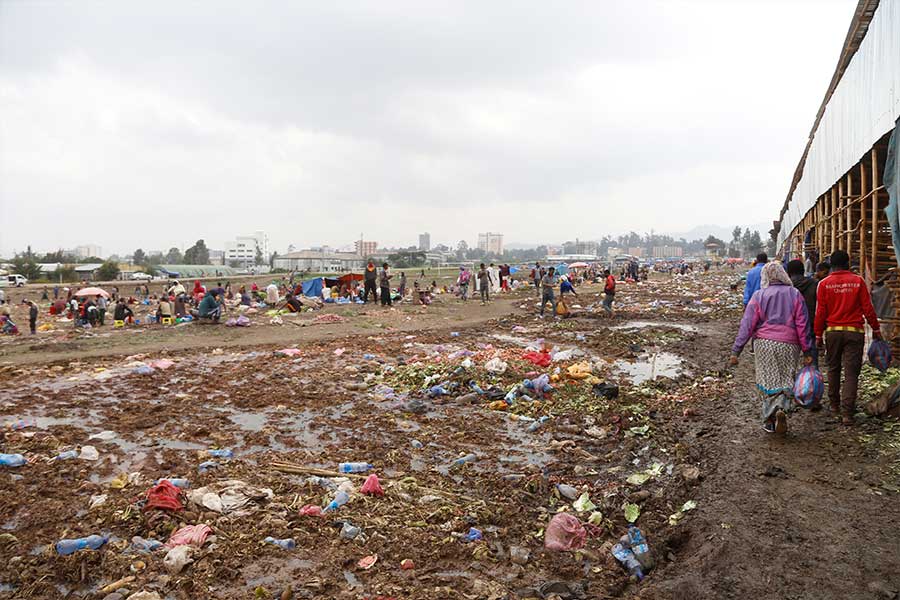
Fortune News | May 29,2021
May 2 , 2020
By HAGOS GEBREAMLAK ( FORTUNE STAFF WRITER )
In early April, as the World Bank Group (WB) was busy throwing lifelines to governments to deal with the ravages of the Novel Coronavirus (COVID-19) pandemic, a landmark study on poverty rates in Ethiopia was released to no applause.
The study, "Ethiopia Poverty Assessment: Harnessing Continued Growth for Accelerated Poverty Reduction," used household consumption data compiled during the last decade to determine where the country showed improvement and how well government programmes and policies worked between 2011 and 2016.
During that time the nation experienced some of its best economic results and became the toast of development experts by averaging more than nine percent growth nationally. But the WB study also showcased some areas that lagged behind.
While the country’s urban population experienced most of the improvement in livelihoods, cutting its poverty rate from 26pc to 15pc in just five years, the much larger rural population saw a much smaller amount of progress, a five percent cut in the poverty rate to 26pc. Twenty percent of the rural population experienced flat or falling consumption levels between 2005 and 2016.
This difference largely follows government interventions and policies, according to Getnet Alemu (PhD), associate professor of development economics and director at the Institute of Development & Policy Research for Addis Abeba University.
The rural incidence of poverty declined from 47.5pc in 1994/95 to 25.6pc in 2015/16, which is a fall of 46.1pc. Likewise, urban poverty declined from 33.2pc to 14.8pc for the same period, a reduction of 55.4pc.
In 1995, the government embarked on Agricultural Development Led Industrialisation (ADLI), a strategy that focused mostly on rural development and neglected non-rural areas, according to Getnet.
In response to the criticism for its exclusionary development model, the government tried to develop a comprehensive urban development policy in 2006/07.
"It was one of the major policy debates during the 2005 election," Getnet said.
After the introduction of the Plan for Accelerated & Sustainable Development to End Poverty, urban poverty declined more quickly than rural poverty, and this was further strengthened during the first edition of the Growth & Transformation Plan (GTP I), according to him.
Getnet argues that in addition to this policy and resource shift, government interventions in rural areas were not effective in reaching their targets.
This can be revealed by looking at the poverty severity index in rural areas, which declined from 1995 to 2005. The same has not been true in recent years. Despite the decline in poverty incidence, the poverty severity index was increasing for rural areas, according to him.
"Efforts to reduce poverty were marginally effective in reaching the poorest of the poor," said Getnet. "Most interventions, like the Productive Safety Net Programme, largely reached those who are close to the poverty line, not the poorest of the poor."
Guta Legesse, lecturer of economics at Addis Abeba University, argues the reason for this inequality is mainly the government’s urban-oriented policies. He points out that most of the budget allocation, government spending and investment go to urban centres, while the rural poor are neglected.
“That’s why ADLI was a failure, and the government shifted to industrial development,” he said.
Even the sections of the rural population that experienced positive consumption growth saw only between one to three percent annual growth on average against three to six percent annual growth of urban consumption.
The main reason for higher growth in urban areas is the increase of income for urban dwellers, mostly coming from the service sector, which is the highest contributor to the country’s GDP, according to Guta.
This implies that growth was more pro-poor in urban areas than in rural areas. So the growth in urban areas is highly likely policy-driven, according to Getnet.
The industrial development strategy, which was issued in 2003, provided a central role for small & medium-sized enterprises, surmised Getnet. The contribution of agriculture to overall growth is on the decline, while the share of urban-related economic activities is increasing.
This is because of the government's attention to reducing urban poverty in small and medium-sized towns where the largest share of the urban poor is living and the transformation of the economy from agriculture to non-agriculture, according to Getnet.
With consumption growth higher at the upper end of the income spectrum, Ethiopia saw a slight increase in inequality during the period.
It is because the government focused only on medium and small urban centres, neglecting the rural economy and agricultural sector, according to Tadele Ferede, associate professor of economics at Addis Abeba University.
"The agricultural sector remains underdeveloped and still operates with traditional practices," Tadele said.
Because the timing of the study coincides with the beginning of the 2015-2018 protests in Ethiopia, which were largely rural in nature, some observers have speculated that the rural regions of the country falling behind the urban areas was a cause of the movement.
Merera Gudina (PhD), professor of political science and international relations at Addis Abeba University and a prominent politician, disagrees that this was the primary concern of protesters. He argues that the root cause of the protests were political and involved suppression and poor governance. Politics was the explicit factor, but the economy was implicit, according to him.
Most of the protests were rooted in small and medium-sized towns, not rural places, according to Merera.
Taye Negussie, assistant professor of sociology at Addis Abeba University, argues the protests for the past five years were mainly ethnocentric and a manifestation of elite competition within EPRDF.
He says most of the protests were coming from rural areas that are homogenous, while urban areas, especially in the south, are ethnically diverse.
"There was an economic element in the protests, but it had minimal cause for the recurrent public uprisings," he said. "Political causes - civil and political rights, self-administration, and elite competition or agendas within the ruling party - were to blame."
The root causes for the uprisings were land partition and shortages, youth unemployment, and erosion of governance both in rural and urban areas, argues Kassahun Berhanu, assistant professor of political science and international relations at Addis Abeba University.
The economy recorded nine percent growth last year, which was attributed to 12.6pc growth in industrial output, an 11pc increase in the service sector, and a 3.8pc expansion in agriculture, constituting 28.1pc, 39.8pc, and 33.3pc of total GDP, respectively.
PUBLISHED ON
May 02,2020 [ VOL
21 , NO
1044]

Fortune News | May 29,2021

Radar | Jun 20,2020

Fortune News | Aug 01,2020

Featured | Sep 10,2023

Radar | Jun 14,2020

Fortune News | Jun 29,2019

Fortune News | Aug 17,2019

Viewpoints | Jan 25,2020

Radar | Jun 27,2020

Editorial | Jan 01,2022

Dec 22 , 2024 . By TIZITA SHEWAFERAW
Charged with transforming colossal state-owned enterprises into modern and competitiv...

Aug 18 , 2024 . By AKSAH ITALO
Although predictable Yonas Zerihun's job in the ride-hailing service is not immune to...

Jul 28 , 2024 . By TIZITA SHEWAFERAW
Unhabitual, perhaps too many, Samuel Gebreyohannes, 38, used to occasionally enjoy a couple of beers at breakfast. However, he recently swit...

Jul 13 , 2024 . By AKSAH ITALO
Investors who rely on tractors, trucks, and field vehicles for commuting, transporting commodities, and f...

Jul 5 , 2025
Six years ago, Ethiopia was the darling of international liberal commentators. A year...

Jun 28 , 2025
Meseret Damtie, the assertive auditor general, has never been shy about naming names...

Jun 21 , 2025
A well-worn adage says, “Budget is not destiny, but it is direction.” Examining t...

Jun 14 , 2025
Yet again, the Horn of Africa is bracing for trouble. A region already frayed by wars...